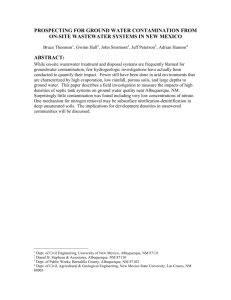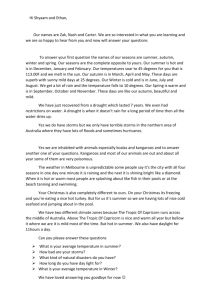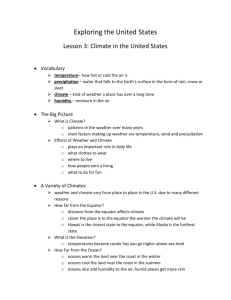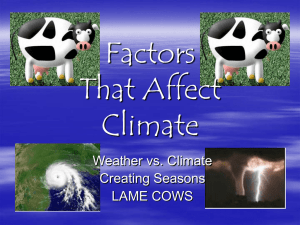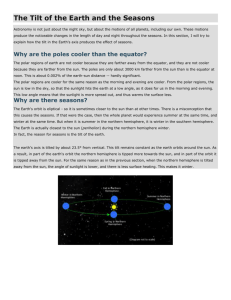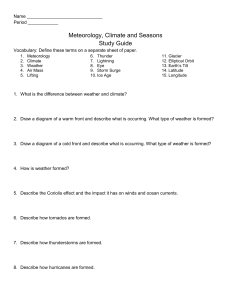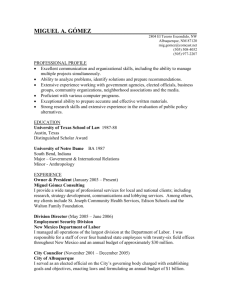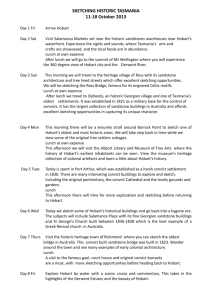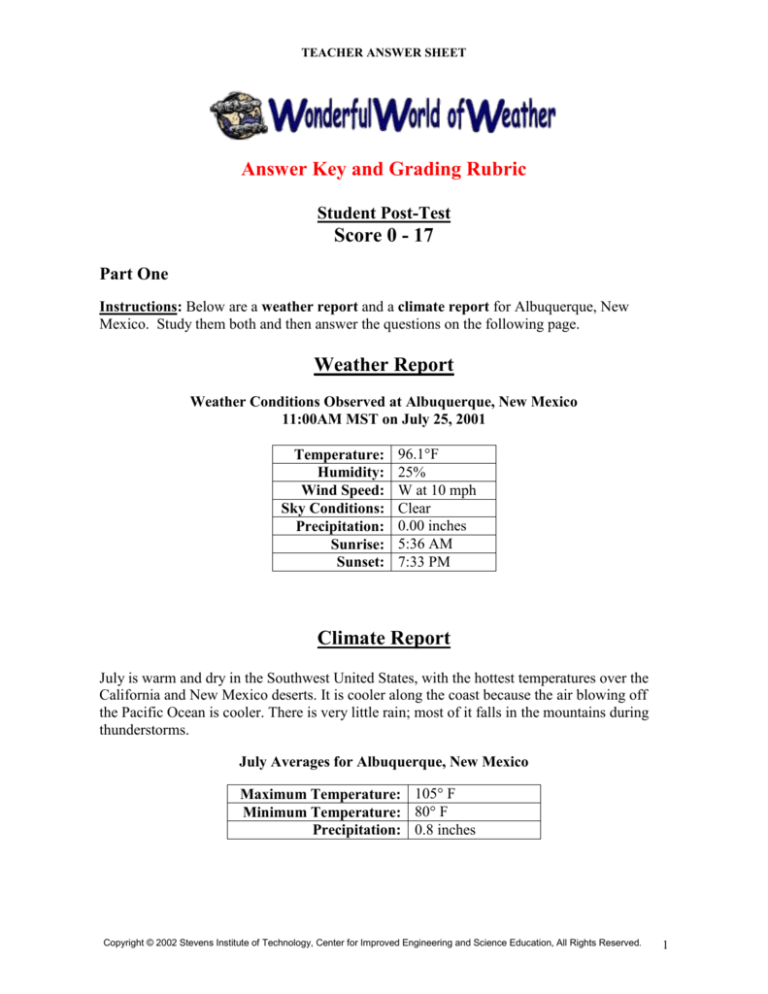
TEACHER ANSWER SHEET
Answer Key and Grading Rubric
Student Post-Test
Score 0 - 17
Part One
Instructions: Below are a weather report and a climate report for Albuquerque, New
Mexico. Study them both and then answer the questions on the following page.
Weather Report
Weather Conditions Observed at Albuquerque, New Mexico
11:00AM MST on July 25, 2001
Temperature:
Humidity:
Wind Speed:
Sky Conditions:
Precipitation:
Sunrise:
Sunset:
96.1°F
25%
W at 10 mph
Clear
0.00 inches
5:36 AM
7:33 PM
Climate Report
July is warm and dry in the Southwest United States, with the hottest temperatures over the
California and New Mexico deserts. It is cooler along the coast because the air blowing off
the Pacific Ocean is cooler. There is very little rain; most of it falls in the mountains during
thunderstorms.
July Averages for Albuquerque, New Mexico
Maximum Temperature: 105° F
Minimum Temperature: 80° F
Precipitation: 0.8 inches
Copyright © 2002 Stevens Institute of Technology, Center for Improved Engineering and Science Education, All Rights Reserved.
1
TEACHER ANSWER SHEET
Questions
1. What was the temperature on July 25, 2001 at 11:00AM? Answer: 96.1°F (1 point)
2. When we look out the classroom window, are we looking at climate or weather?
Answer: Weather (1 point)
3. Which report would you choose if you were deciding whether or not to take an
umbrella with you on a particular day? Answer: Weather (1 point)
4. When might you need or be able to use the kind of information that is given in the
climate report? (1 point)
Accept all reasonable responses. Possible answers:
Planning a vacation
Planning to relocate
Comparing other locations to one's own
Research on a particular part of a country
5. Explain the difference between the terms "weather" and "climate."
Students' answers should demonstrate their understanding that weather changes
every day and climate is the average weather in a location over a long period of time.
One might say that climate is what weather is "normally" like in a place. The daily
recording and averaging of weather information helps to describe the climate of an
area.
Scoring:
Full credit
(3 points) Student's explanation is complete, showing a clear
understanding of the difference between weather and climate.
Partial credit
(2 points) Student defines the terms, but does not attempt to relate the
terms to one another
(1 point) Student defines only one of the terms and provides no further
explanation.
Copyright © 2002 Stevens Institute of Technology, Center for Improved Engineering and Science Education, All Rights Reserved.
2
TEACHER ANSWER SHEET
Part Two
Instructions: Imagine that you and your cousin live in different cities that are about the same
distance from the equator. You live north of the equator in the United States and your cousin
lives south of the equator in Australia. Listed below are the average temperatures for two
dates in 2001. Look at the chart and then answer the questions below.
City
Boston, Massachusetts
42.2o N
Hobart, Australia
42.5o S
January 1, 2001
July 1, 2001
27.6° F
76.3° F
70.9° F
38.7° F
Questions
1. Which city has winter in January? Answer: Boston (1 point)
2. Which city has winter in June? Answer: Hobart (1 point)
3. In what month in each city does summer begin? Answer: June in Boston; December in
Hobart (1 point)
4. What is the reason for this reversal of seasons from northern to southern hemispheres?
Answer: Because of the tilt of the earth's axis (23.5o) and because of the earth's
revolution around the sun, we have seasons. When the part of the earth that we
live on is tilted away from the sun, we have winter. The tilt results in the northern
and southern regions being pointed toward the sun at some times of the year and
away from the sun at others. This change in orientation of the earth with respect
to the sun is the cause for changes in the seasons.
Scoring:
Full Credit
(3 points) Student's explanation is complete, making reference to both
the revolution of the earth and the tilt of the earth's axis.
Partial Credit
(2 points) Student's explanation is incomplete, but does make mention
of earth's revolution around the sun.
(1 point) Student's explanation is incomplete with evidence of minor
misconceptions.
Copyright © 2002 Stevens Institute of Technology, Center for Improved Engineering and Science Education, All Rights Reserved.
3
TEACHER ANSWER SHEET
Part Three
Instructions: Answer the following question. Please provide as much detail as possible.
Weather forecasters or meteorologists use many instruments or tools to help them predict
weather. They study special maps that help them see the direction in which clouds and storms
are moving. Explain how a weather forecaster can use some of these tools to predict the
weather that your city will be having in three days.
Scoring: Give one point for each reasonable response, up to a total of 4 points
Possible answers (accept all reasonable responses):
Radar maps - Used to track storms and precipitation.
Satellite maps - Used to track storms and monitor cloud cover.
Past weather reports for your area - Used to create weather models that can
help predict future weather as well as general climate conditions.
Current weather reports from your city - Used to determine current
conditions as well as trends (e.g. falling barometer) in recent weather.
Current weather reports from other cities - Used to determine weather
conditions that may be moving into your area.
Instruments that measure wind speed and direction - Used to predict
locations of storms and intensity of weather.
Copyright © 2002 Stevens Institute of Technology, Center for Improved Engineering and Science Education, All Rights Reserved.
4


